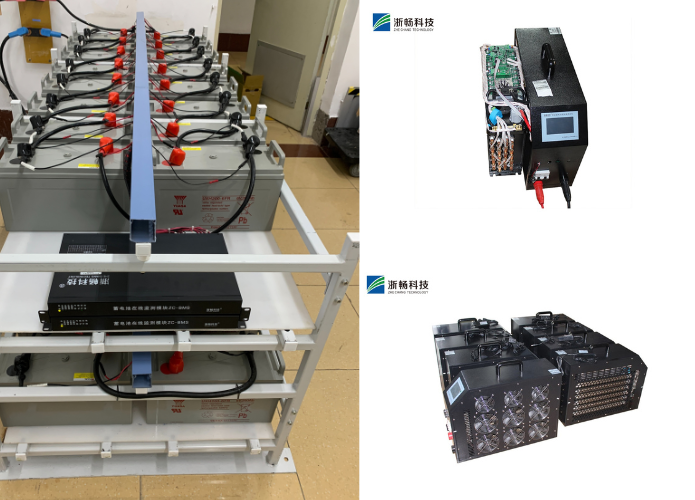How to Test a 12V Battery with a Multimeter?
Testing a 12V battery is a vital step in determining whether it’s still functioning properly or needs to be replaced. Whether you're dealing with a car battery, a motorcycle battery, or a battery used in other applications, knowing how to check its voltage and load capacity can save you from sudden failures and extend the lifespan of your electrical system. One of the most effective tools for testing a 12V battery is a multimeter. In this guide, we’ll explain in detail how to test a 12V battery with a multimeter, breaking down the process into clear and actionable steps.
What is a 12V Battery?
Understanding the basic operation of a 12V battery is crucial before testing it. Most 12V batteries are of the lead-acid type, which are widely used in various applications including cars, motorcycles, boats, and backup power systems. Lead-acid batteries work by storing electrical energy through chemical reactions that occur within the battery's cells. Specifically, they consist of lead dioxide (PbO2) as the positive plate, sponge lead (Pb) as the negative plate, and a sulfuric acid (H2SO4) electrolyte that facilitates the chemical reaction. When the battery is discharging, the chemical reaction between the lead plates and the electrolyte generates electrical energy which can be used to power electrical components.
Over time, a 12V battery can experience a decrease in its charge capacity due to several factors. Common issues include leaving lights on for extended periods, frequent deep discharges, and general wear and tear from regular use. Such conditions can lead to sulfation of the battery plates or degradation of the electrolyte, reducing the battery's overall performance and lifespan.
Regularly testing the battery is essential to ensure it remains in good working condition. Testing helps identify potential issues early, allowing for timely maintenance or replacement, and ensures that the battery continues to provide reliable power when needed.
Tools Required to Test a 12V Battery
To effectively test a 12V battery, the primary tool you’ll need is a multimeter. A multimeter is an electronic measuring instrument capable of measuring various electrical parameters such as voltage, current, and resistance. It’s essential for assessing the health and performance of your battery. There are two main types of multimeters:
Analog Multimeter: This type uses a needle that moves across a scale to indicate measurements. It provides a visual, continuous representation of the measurements and is useful for detecting fluctuations or trends over time. However, it may require a bit more interpretation and can be less precise compared to digital models.
Digital Multimeter: This type displays readings in numerical form on a digital screen. It is generally easier to use and provides more precise, direct measurements, making it a preferred choice for many users. Digital multimeters are also more user-friendly, especially for beginners.
In addition to the multimeter, several other tools can be useful for more in-depth testing:
- 12V Battery Tester: A simple tool designed to measure the charge level of a 12V battery.
- 12V Battery Load Tester: This tool applies a load to the battery and measures its performance under stress, helping to assess its ability to maintain voltage under typical operating conditions.
- 12V Battery Analyser: A more advanced tool that provides detailed information about the battery's health, including its state of charge, capacity, and overall performance.
While these specialized tools can offer more detailed insights into your battery’s condition, a multimeter is usually sufficient for basic testing and troubleshooting.
Step-by-Step Guide to Testing a 12V Battery with a Multimeter
Step 1: Safety Precautions
Before handling a battery, safety is crucial. Batteries contain chemicals and can discharge large amounts of electrical energy, which could lead to burns or injuries if handled incorrectly. Here are some precautions to follow:
Wear protective gloves and safety goggles.
Ensure the vehicle or equipment is turned off before testing.
Work in a well-ventilated area, as batteries can emit dangerous gases.
Step 2: Set the Multimeter
Turn on the digital multimeter and set it to measure DC voltage. Since a 12V battery is a direct current (DC) device, it's essential to use the correct setting.
Adjust the voltage range to 20V, as this is the appropriate range for measuring a 12V battery.
Step 3: Locate the Battery
If you're testing a car battery, it’s likely located under the hood. In some vehicles, it may be in the trunk or under the back seat. Ensure that you have access to both the positive (+) and negative (-) terminals of the battery.
Step 4: Connect the Multimeter to the Battery
Once the multimeter is set, follow these steps:
Connect the red probe of the multimeter to the positive terminal of the battery.
Connect the black probe of the multimeter to the negative terminal of the battery.
Make sure the probes are securely attached to the terminals for an accurate reading.
Step 5: Read the Voltage
With the probes properly connected, check the reading on the multimeter’s display. For a fully charged 12V battery, you should get a reading of around 12.6 volts. Here’s what different readings may indicate:
12.6V or higher: The battery is fully charged.
12.4V to 12.6V: The battery is partially charged but in good condition.
12.0V to 12.4V: The battery is undercharged and may need recharging.
Below 12.0V: The battery is significantly discharged, and recharging or replacement may be necessary.
Step 6: Perform a Load Test (Optional)
For a more accurate measure of battery health, consider performing a load test. A 12V battery load tester or a 12V battery analyser can simulate the load of a starter motor to determine how well the battery holds up under stress.
To perform the load test with a multimeter:
Keep the multimeter probes connected to the battery terminals.
Have someone start the vehicle or turn on a significant electrical load, such as the headlights.
While the load is active, observe the voltage on the multimeter.
A healthy battery will maintain a voltage reading above 9.6V while under load. If the voltage drops below this value, it indicates that the battery may struggle to supply sufficient power under real-world conditions.
How to Test a 12V Battery with a 12V Battery Tester
A 12V battery tester is a specialized tool designed to simplify the process of assessing the health of 12V batteries, offering detailed information that goes beyond what a standard multimeter can provide. Here’s a step-by-step guide to using a 12V battery tester:
Turn Off the Vehicle or Device: Before testing, make sure that the equipment or vehicle using the battery is turned off. This prevents any electrical interference and ensures accurate readings.
Connect the Tester: Attach the tester's clamps to the battery terminals. The red clamp should be connected to the positive terminal (+), and the black clamp should be connected to the negative terminal (−). Ensure that the connections are secure to get reliable measurements.
Read the Results: Most 12V battery testers will display the battery’s current voltage and provide an overall health indicator. Advanced models may also show additional metrics such as cranking amps or internal resistance. The results will typically be shown on a digital screen or through an analog gauge, depending on the tester type.
Interpret the Results: Many modern 12V battery testers include a pass/fail indicator, which simplifies interpreting the results. A “pass” result means the battery is in good condition, while a “fail” result indicates that the battery may need replacement. Some testers might also provide additional information about the battery’s performance under load or its capacity.
Using a 12V battery tester helps ensure that your battery is functioning properly and can provide early warnings if it’s time to consider a replacement.
Using a 12V Battery Load Tester
A 12V battery load tester is a crucial tool for evaluating a battery's performance under simulated real-world conditions. By applying a controlled load to the battery, it helps to determine how well the battery can handle stress and maintain its voltage under operational conditions. Here’s a step-by-step guide to using a 12V battery load tester:
Connect the Load Tester: Begin by attaching the load tester’s clips to the battery terminals. Connect the red clip to the positive terminal (+) and the black clip to the negative terminal (−). Ensure that the connections are firm to obtain accurate results.
Apply the Load: Activate the load tester. Most load testers apply a load that is equal to half the battery’s Cold Cranking Amps (CCA) rating. This load is typically maintained for a short period, usually around 10-15 seconds. The load simulates the stress the battery would experience when starting an engine or powering equipment.
Observe the Results: During the test, the load tester will measure the battery’s voltage as the load is applied. A healthy battery should be able to maintain a voltage above 9.6V throughout the test period. This indicates that the battery has sufficient capacity and is capable of performing well under stress.
Interpret the Results: If the voltage drops significantly below 9.6V during the test, it suggests that the battery may be unable to handle the demands placed on it, such as starting an engine or powering equipment for extended periods. In such cases, it may be time to consider replacing the battery to ensure reliable performance.
Using a 12V battery load tester helps ensure that your battery can handle real-world demands and provides a more comprehensive assessment of its health and performance.
Interpreting Test Results: Is Your 12V Battery Still Good?
After conducting a test with either a multimeter, 12V battery tester, or 12V battery load tester, it’s crucial to understand what the results mean.
Healthy Battery
- Voltage between 12.4V to 12.6V.
- Load test result above 9.6V.
This battery is in good condition and should perform reliably.
Needs Recharging
- Voltage between 12.0V to 12.4V.
- Load test result drops but stays close to 9.6V.
This indicates a partially discharged battery. Recharging the battery should restore it to full performance.
Bad Battery
- Voltage consistently below 12.0V.
- Load test result significantly below 9.6V.
This means the battery has either reached the end of its lifespan or has a major fault. In this case, the best solution is to replace the battery.
How to Maintain a 12V Battery
Testing a 12V battery regularly helps in identifying problems early, but good maintenance practices can significantly extend the lifespan of your battery.
1. Regular Charging
Avoid letting your battery sit unused for long periods. Keep it charged by driving your vehicle regularly or using a battery maintainer for long-term storage.
2. Clean the Terminals
Dirty or corroded terminals can affect your battery’s ability to hold a charge. Clean the terminals periodically with a wire brush and a mixture of baking soda and water.
3. Check the Fluid Levels
For lead-acid batteries, it’s essential to monitor the electrolyte levels. If the fluid levels are low, top them up with distilled water.
4. Store in a Cool Environment
Heat accelerates the wear and tear of a battery. Store your battery in a cool, dry place when not in use to extend its life.
Conclusion
Testing a 12V battery with a multimeter is a straightforward and effective method for assessing the health and charge status of your battery. By using tools such as a 12V battery tester, 12V battery load tester, or 12V battery analyzer, you can accurately gauge its voltage levels, load capacity, and overall condition. Regular testing helps identify potential issues early on, such as low charge or internal faults, preventing unexpected failures. Understanding how to interpret the readings from these tools enables you to take preventive measures, such as recharging or replacing the battery if necessary. Combined with proper maintenance, periodic testing ensures your 12V battery operates efficiently and delivers consistent, reliable performance throughout its lifespan. Keeping a close eye on your battery’s health also prolongs its usability, saves on replacement costs, and helps you avoid inconvenient breakdowns, especially in critical applications like vehicles or backup systems.
Popular Battery Tester
Popular Battery Tester
Latest News
Latest News


Get Price of Battery Tester
Get Price of Battery Tester
Address:
Floor 3, Building 1, No.1418-60, Moganshan road, Hangzhou city, Zhejiang Province, China.310015




















































